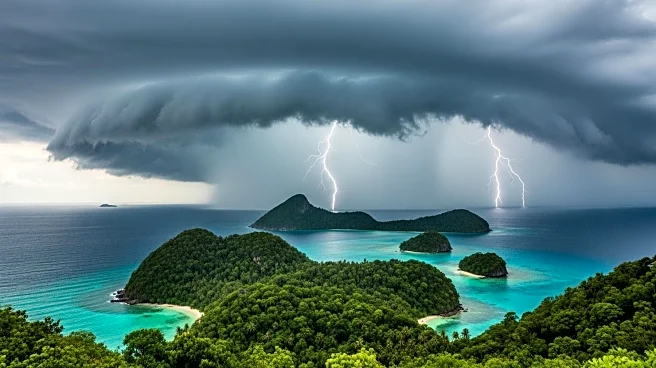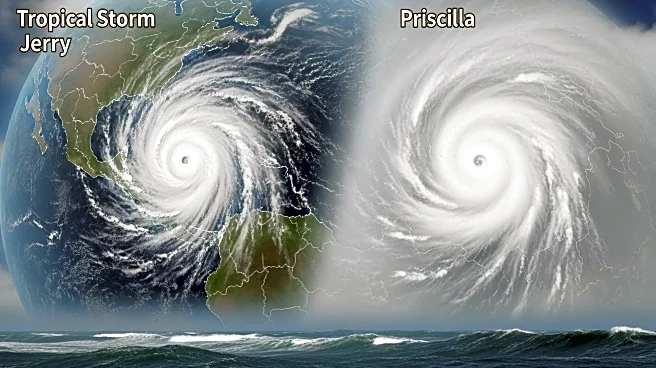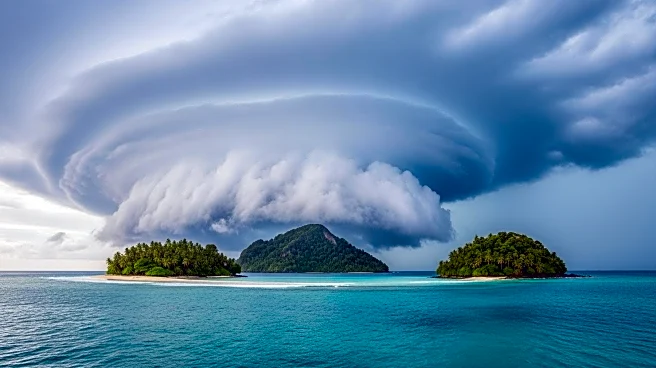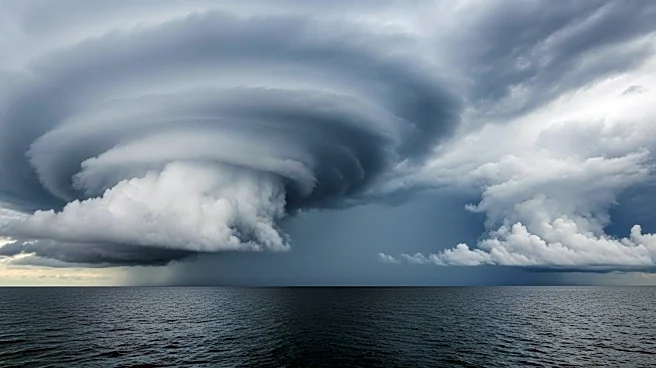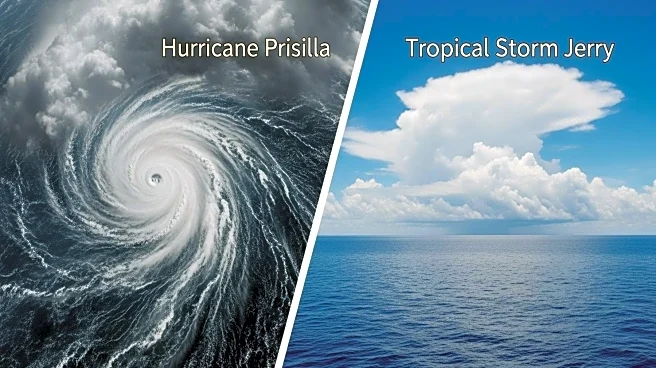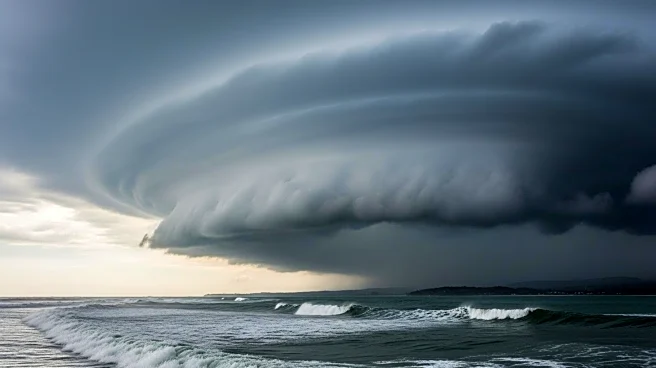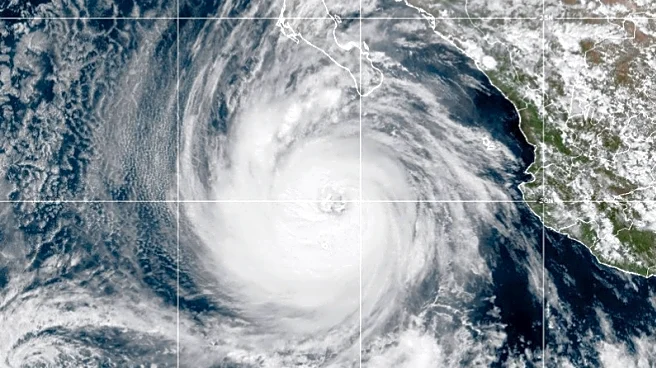What's Happening?
Subtropical Storm Karen has been designated as the northernmost named storm in Atlantic history by the National Hurricane Center. Located at 44.5 degrees north, 33.0 degrees west, Karen formed within a larger mid-latitude storm system, despite sea surface temperatures being only around 19 degrees Celsius. The storm is expected to become post-tropical by Saturday, remaining in the remote North Atlantic. This development follows the naming of subtropical storms by the NHC since 2002, with the previous record held by Tropical Storm Grace in 2009.
Why It's Important?
The formation of Subtropical Storm Karen highlights the evolving nature of storm systems in the Atlantic, potentially influenced by broader climatic changes. While Karen itself poses no immediate threat to land, its record-setting position underscores the need for continued monitoring and research into storm patterns and their implications for weather forecasting. The event may prompt discussions on the impact of climate change on storm formation and behavior, influencing future policy and preparedness strategies.
What's Next?
Karen is expected to lose its center of circulation and become post-tropical by Saturday. The storm will remain in the North Atlantic, posing no threat to land. However, its record-setting formation may lead to increased scrutiny and research into the factors contributing to such unusual storm behavior. Meteorologists and climate scientists may explore the implications of this event for future storm tracking and climate models.
Beyond the Headlines
The occurrence of Subtropical Storm Karen in the mid-latitude North Atlantic raises questions about the potential impact of climate change on storm formation. As sea surface temperatures and atmospheric conditions evolve, the frequency and intensity of such storms may change, affecting long-term weather patterns and coastal resilience strategies. This event could serve as a catalyst for further research into the relationship between climate change and storm dynamics.



